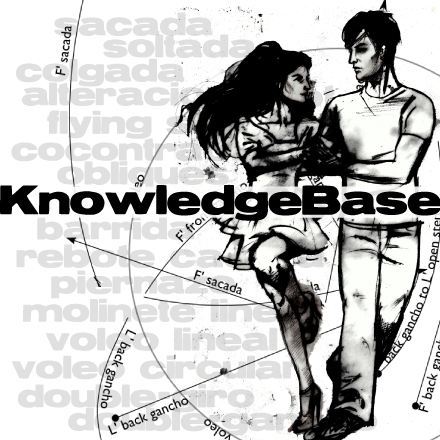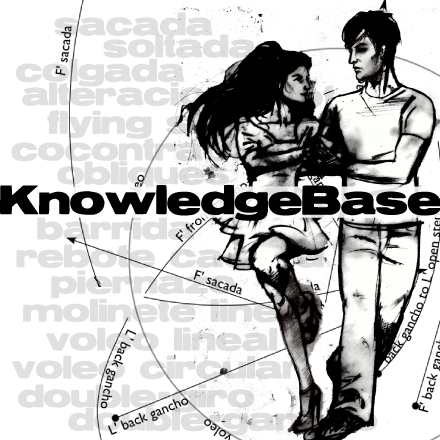Co-contraction is a method of using our muscles to increase the power of our bodies. We use co-contraction for several things in tango.
- To intensify connection
- To create elasticity
- To put power into the Revel’s free leg, maximizing a projection
What is co-contraction?
Co-contraction is a biomechanical function of our muscles. Our muscles work in pairs. Usually one muscles relaxes while the other one contracts. But in special situations, such as jumping, we contract both muscles in a pair. This creates more muscle power. In tango, we’ll be using two different muscle pairs:
- biceps femoris (also known as hamstrings, which flexes our knee joints) + quadriceps (which flexes our hip joints)
- biceps (flexes elbow) + triceps (extends elbow)
To create co-contraction, contract both muscles in the pair at the same time. This is a pretty intense feeling, and you won’t want to keep it up for very long.
Remember that the Revel’s body moves as a consequence of the Mark’s. In any co-contraction, the revel’s body will match the Mark’s movement in speed, intensity, and power, but she will always be a little later than the Mark’s. (In fact beginning revels are always surprised by how much later!)
Using co-contraction to intensify connection
We use co-contraction to make the arch of connection more strong in special situations
- creating an extra dramatic/powerful projection
- challenging balance situations like double gancho
- leaning movements (volcada and colgada)
Using co-contraction to create elasticity
We use elasticity for rebote, alteracions, and contra movements such as rebote cadera and patada. Sometimes we make our voleos and ganchos elastic as well.
Elasticity is a biomechanical function of the body. When our muscles get stressed they want to get out of the situation and relax. There are a few ways we can stress our muscles to trigger an elastic response: stretching them too quickly (that’s triggers the ‘stretch reflex’), accelerating the muscles, and causing the muscles to fight each other, with a very hard co-contraction.
To create elasticity we create a strong co-contraction and then release it.
To make an elastic step (rebote), we co-contract quads+hamstrings of either the sending leg or the receiving leg and then release to bounce back to the original position. (You’ll notice two different sensations. They’re both nice, and useful in different situations.)
To make a blocking movement (rebote cadera and patada), we co-contract both legs and arms.
Co-contraction does not have its own direction. The Revel’s body has direction. The application of co-contraction will have a different resulting sensation, depending on what is already in her body.
Using co-contraction to send power into the revel’s free leg
Special effects with the revel’s free leg (voleos and ganchos) are created through a combination of projection + power which maximizes the extension. The power is applied in specific geometries to create different effects.


For voleo-circular, the mark positions the co-contraction step on a circle going around the revel’s base leg, either with or against (contra) the direction of her projection).
For voleo-linear the mark makes a co-contraction on a parallel line to the revel’s free leg.
For gancho, the mark positions the co-contraction step (and a hole in his legs) in the path of the revel’s free leg, marking a voleo but capturing it with his own legs to make a hook.
Conservation of co-contraction
We can hold on to the co-contraction and use it for the next movement.
We use co-contraction to smooth the transition from one movement to another, to add some pivot, or when we want to hold the power, momentum, or torsion of one movement into the next step Examples:
- alteracion: a rebote which uses the cocontraction to pivot before releasing
- from a front or back circular voleo into a side step
- from a sacada into a gancho
- Pulpeades











